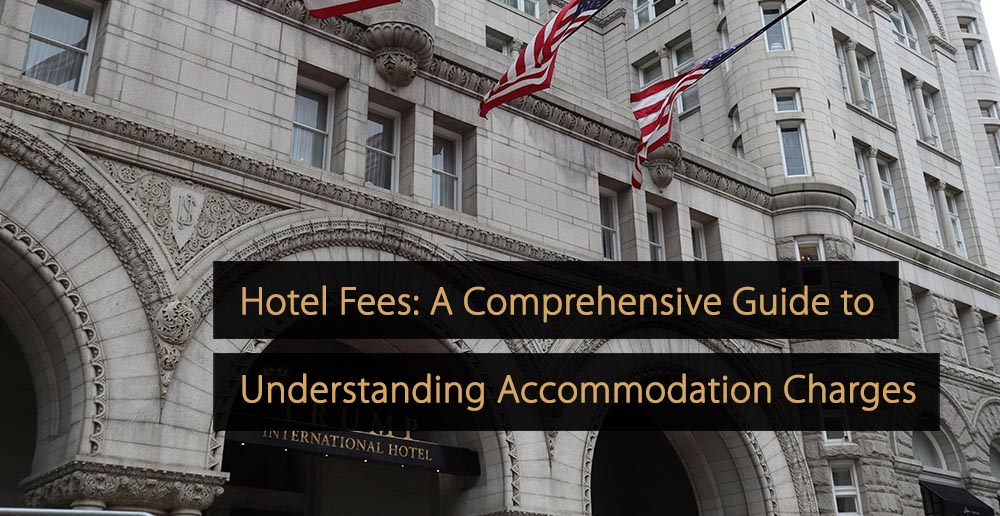The hotel star rating system is one of the main ways hotels are assessed and rated. This is important because potential customers may look at the star ratings of a hotel before deciding whether to book a room there. Here, you can learn about the types of hotel star ratings, what they mean, and their overall significance.
Table of Contents:
- What is the History Behind the Hotel Star Rating System?
- International Standardization of Hotel Star Rating Systems
- What is the Significance of Hotel Star Ratings?
- What Does Each Hotel Star Rating Mean?
- Table: Key Aspects of Hotel Star Rating System
- Introduction of 7-Star Hotels
- Green Key International Certifications for Hotel Excellence
- Hotel Star Ratings on OTAs
- Tips to Boost OTA Bookings
What Is the History Behind the Hotel Star Rating System?
The commonly used hotel star rating system was created in 1958 by the Mobil Corporation, an oil company in the United States. This unusual beginning can be explained by the creation of the Mobil Travel Guide, which promotes road trips in the USA. Star ratings were allocated to hotels based on set criteria.
In the years since, the Mobil Travel Guide has been renamed the Forbes Travel Guide and expanded to cover hotels worldwide. Hotels are rated by anonymous inspectors, who use set criteria to make judgments. Hotel star ratings span from 1-star to the prestigious 5-star rating, earned only by the best hotels. According to the Forbes Travel Guide, the guide features 360 five-star and 585 four-star hotels in 2023.
International Standardization of Hotel Star Rating Systems
Despite attempts from several organizations within the hotel industry, there is no international standard for hotel star ratings. That said, individual guides, such as the Forbes Travel Guide, have set criteria for rating hotels, and star ratings are the most common system for evaluating hotels.
Some countries have a hotel star rating system governed by their hotel industry association, with Germany being one of the biggest examples. However, some companies and hotel evaluators use different systems, such as allocating hotels a certain number of diamonds or a letter grade, with ‘A’ being the best and ‘F’ being the worst.
What Is the Significance of Hotel Star Ratings?
Customers decide which hotels to book by weighing up several factors. For example, they may look into the location, the price, the facilities, or the deployed hotel technology. However, a major part of this decision will be based on what they anticipate regarding service and customer experience.
With this in mind, hotel star ratings can impact customers’ booking decisions by giving them insights into what they may expect from a hotel. A higher star rating indicates that a hotel offers a better experience, and customers will then factor this into their decision-making while still considering other factors, like pricing.
Video: What’s the difference between a 4★ and 5★ hotel?
What Does Each Hotel Star Rating Mean?
Hotels can be given ratings from 1 star all the way up to 5 stars. While most people know that a 5-star hotel is highly recommended, it is important to look at precisely what each rating means.
1-Star Hotel
A 1-star hotel is the lowest hotel rating given by guides like the Forbes Travel Guide. Hotels of this kind offer the absolute basics: a room with a bed, a bathroom, and very little else. Additional amenities will not be on-site, meaning you cannot visit the hotel restaurant. That said, most hotels with this hotel star rating will be budget hotels, suitable for those with modest needs.
2-Star Hotel
A 2-star hotel will still be aimed at more budget-conscious travelers and will still provide the essentials, such as a room, a bed, and a bathroom. On-site dining is usually available, and rooms may have extras, such as a television. Front desk services are more complete than with 1-star hotels, and some additional services may be available, but these will usually be fee-based, meaning guests will need to pay extra and specifically request them.
3-Star Hotel
For a hotel to achieve 3-star status, the hotel management will need to focus on delivering a complete service. In addition to larger hotel rooms with high-quality furnishings, properties with this hotel star rating will offer additional services and facilities, including a gym, a swimming pool, an on-site restaurant, public Wi-Fi, and conference rooms for business customers. Many hotels will also be part of an established, well-known chain.
4-Star Hotel
A hotel star rating of 4 stars means a property offers an excellent guest experience. The hotel rooms will be large, lavish, well decorated, and include plenty of extras. Significant investment will be made in hotel technology, and customer service will be a top priority. The on-site restaurant will provide a very good dining experience, while the additional amenities and services will surpass those offered by 3-star hotels.
5-Star Hotel
5-star is the rating given to the best hotels in the world. These properties are large, filled with luxury offerings, and provide spacious rooms, with the best facilities. Cleanliness and customer service will be at the highest level, and the on-site gyms, pools, restaurants, and bars will also be exceptional. These hotels will often feature the best designs and may be based on unique buildings.
Table: Key Aspects of Hotel Star Rating System
Introduction of 7-Star Hotels
One of the recent more popular hotel marketing strategies has involved promoting certain notable or outstanding properties as being 7-star hotels. This concept is often pushed by the tourist board of a particular country or the business itself, and it is intended to highlight the hotel as extra special.
For example, Dubai’s Burj Al Arab hotel has often been given the 7-star label, citing its Rolls Royce shuttle service, butler for every room, and unique architecture, among other attributes. Similarly, the Emirates Palace in Abu Dhabi also claims 7-star status. However, in reality, this luxury hotel only has a 5-star rating.
No major publication or reputable hotel rating organization assesses hotels on a scale up to 7 stars, and this is, in reality, a simple hotel marketing trend, that is intended to separate the most luxurious and extravagant hotels in the world from the various other hotels that have also been awarded 5-star status.
For more information about 7-star hotels, read “The 7 Star Hotel: Learn Everything About Seven Star Hotels.”
Green Key International Certifications for Hotel Excellence
While hotel star rating systems have historically focused on areas like quality of service, luxury offerings, and hotel facilities, it is becoming increasingly common for properties to be rated according to other factors, such as how sustainable their practices are and how well they promote environmental consciousness.
The biggest example is Green Key International, a respected environmental body that awards hotels and other guest accommodations the Green Key label if they meet set criteria. These criteria focus on issues like waste, clean energy, water management, sustainability, and overall environmental awareness. According to Green Key International, there are more than Green Key certified 5,000 hotels worldwide.
In general, eco-friendly travel is becoming more important, especially as customers become more aware of some negative consequences of travel and tourism practices. With this in mind, Green Key hotels can separate themselves from other hotels by portraying their business as a more ethical choice.
Hotel Star Ratings on OTAs
One of the more significant and potentially misleading hotel trends that customers and others in the hotel industry need to be aware of when exploring hotel star ratings is the issue of star ratings listed on online platforms, such as online travel agencies (OTAs) and hotel metasearch engines.
Many of these platforms allow hotels to self-select their star rating when signing up for the service. Although many hotels prioritize credibility and self-select the star rating they have achieved from reputable organizations, some hotels may instead mislead customers by choosing a higher star rating than they have achieved.
Different platforms have different approaches to tackling this issue. However, in general, hotels should promote themselves with integrity. Many platforms also showcase customer reviews and assign a rating to hotels. Customers may become suspicious if your hotel star and customer ratings differ drastically.
Tips to Boost OTA Bookings
Developing your offering and raising your hotel star rating is a great way to increase bookings. However, there are many other ways hotels can boost demand and generate more bookings from OTAs, including showcasing the hotel with the right photographs, using a hotel channel manager, and optimizing your hotel description.
To explore these and several other strategies for increasing bookings through online travel agencies and similar platforms, take a look at the “OTA: Tips To Increase Your Hotel Bookings Through OTAs” article.
Hotel Star Rating System FAQs
Hotel star ratings help customers judge the quality of a hotel and the level of service they can expect. Hotels that achieve good star ratings often make it a key part of their hotel marketing strategy, and achieving 5-star status is considered extremely prestigious within the industry.
Did You Like This Article About the Hotel Star Rating System?
You might also be interested in the following articles:
- Hotel Facilities: Everything You Should Know About Facilities in Hotels
- Hotel Designs: Inspirations for Hoteliers for New Design Hotels
- Hotel Room Types & Room Pricing Tips for Hoteliers
- Hotel Podcasts; 17 Excellent Podcasts for Hotel Managers & Executives
- Hotel Breakfast: Types, Overview & Tips to Impress Your Guests
More Tips to Grow Your Business
Revfine.com is the leading knowledge platform for the hospitality and travel industry. Professionals use our insights, strategies, and actionable tips to get inspired, optimize revenue, innovate processes, and improve customer experience.Explore expert advice on management, marketing, revenue management, operations, software, and technology in our dedicated Hotel, Hospitality, and Travel & Tourism categories.
This article is written by:
Hi, I am Martijn Barten, founder of Revfine.com. With 20 years of experience in the hospitality industry, I specialize in optimizing revenue by combining revenue management with marketing strategies. I have successfully developed, implemented, and managed revenue management and marketing strategies for individual properties and multi-property portfolios.











Leave A Comment